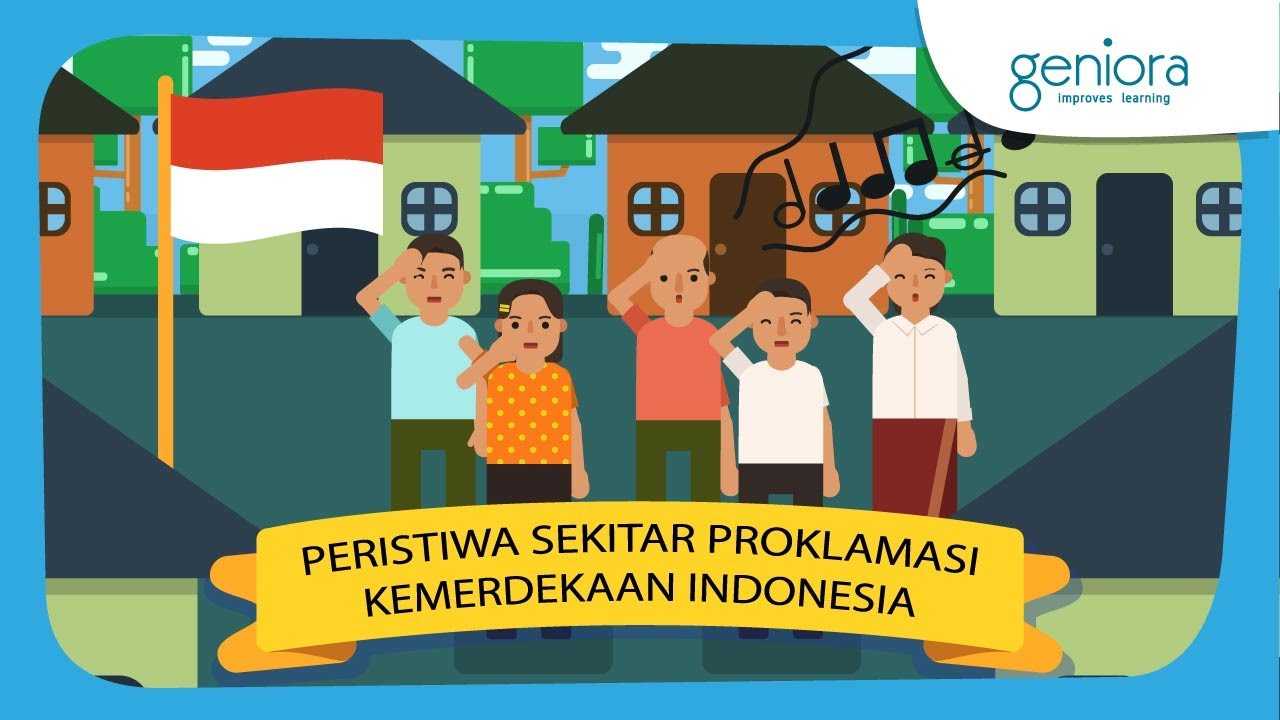Sejarah Pembentukan BPUPKI dan PPKI
Summary
TLDRThe script outlines the formation and key events surrounding the BPUPKI and PPKI, bodies established to prepare for Indonesia's independence. Amid World War II and Japan's deteriorating position, the Japanese government promised independence to Indonesia. BPUPKI was formed in 1945, tasked with drafting the nation's constitution. Key figures like Sukarno, Hatta, and Soepomo played crucial roles in shaping the foundation, including the development of Pancasila as the country's guiding principles. After BPUPKI's dissolution, PPKI took over to facilitate Indonesia’s independence, which was formally granted by Japan in August 1945, marking a pivotal moment in Indonesia’s history.
Takeaways
- 😀 The BPUPKI (Indonesian Independence Preparatory Investigation Agency) was formed to prepare the components of Indonesia's independence, starting in March 1945.
- 😀 Japan, in a state of crisis during World War II, promised Indonesia independence to gain support from the Indonesian people to strengthen its defense against Allied forces.
- 😀 BPUPKI was officially formed on April 29, 1945, and was tasked with investigating Indonesia's independence preparation.
- 😀 The BPUPKI was led by Dr. KRT Ichibangase and Mr. AG Pringgodigdo, with the Secretariat headed by Toyohitomasuda and Mr. AG Pringgodigdo.
- 😀 BPUPKI held two major sessions, the first from May 29 to June 1, 1945, and the second from July 10 to July 17, 1945, where it discussed the nation's foundational principles and constitutional matters.
- 😀 The first session focused on proposals for Indonesia's state ideology. Soekarno proposed Pancasila, which was eventually chosen as the foundation of the state.
- 😀 The Panitia Sembilan (Nine Committee) formed in June 1945 worked on drafting the Jakarta Charter, which was later integrated into the Indonesian Constitution.
- 😀 The second BPUPKI session focused on drafting the Constitution, including the Preamble and the Basic Law, which was derived from the Jakarta Charter.
- 😀 On August 7, 1945, after BPUPKI concluded its work, the PPKI (Independence Preparation Committee) was formed to continue the work of BPUPKI and prepare for Indonesia's transfer of power from Japan.
- 😀 The PPKI, with 27 members after an increase in representation, was tasked with the immediate preparation of Indonesia’s independence, including the final arrangements for the country’s independence declaration on August 17, 1945.
Q & A
What does BPUPKI stand for, and what was its purpose?
-BPUPKI stands for 'Badan Penyelidik Usaha-usaha Persiapan Kemerdekaan Indonesia' (Investigating Committee for Preparatory Work for Indonesian Independence). It was established to prepare the components necessary for Indonesia's independence.
Why was BPUPKI formed in 1945?
-BPUPKI was formed due to Japan's increasingly dire situation in World War II. Japan needed to secure the support of the Indonesian people to maintain its position in the region, leading to the promise of independence for Indonesia.
Who was the first chairman of BPUPKI?
-The first chairman of BPUPKI was Dr. KRT Radjiman Wedyodiningrat, who was appointed by Japan.
What key event happened on May 28, 1945, related to BPUPKI?
-On May 28, 1945, BPUPKI was officially inaugurated in Jakarta at the Chuo Sangi In building, marking the start of its work in preparing for Indonesia's independence.
What was the main task of BPUPKI?
-The main task of BPUPKI was to investigate the preparatory efforts for Indonesia’s independence, including the drafting of the national constitution and determining the foundations of the new Indonesian state.
What were the major proposals for the foundational principles of Indonesia’s state during the BPUPKI sessions?
-During the BPUPKI sessions, there were several proposals for the foundational principles of Indonesia’s state, including Mo Yamin’s proposal on nationalism, humanism, Godliness, democracy, and welfare; Soepomo’s idea of unity and social justice; and Soekarno’s Pancasila, which emphasized national unity, internationalism, democracy, social welfare, and belief in God.
What is the significance of Pancasila in Indonesia's history?
-Pancasila, proposed by Soekarno on June 1, 1945, became the foundation of the Indonesian state. It is a set of five principles: belief in God, nationalism, internationalism, democracy, and social welfare, which was later simplified into the 'Ekasila' or 'Gotong Royong' (mutual cooperation).
What was the role of the Panitia Sembilan (Nine Committee)?
-The Panitia Sembilan (Nine Committee) was responsible for finalizing the proposed foundation of the Indonesian state. They drafted the Piagam Jakarta (Jakarta Charter), which included the concept of Islam as a guiding principle for the state, and was instrumental in shaping Indonesia's early constitutional framework.
What happened after BPUPKI completed its work in 1945?
-After BPUPKI completed its work on the draft constitution, it was dissolved by the Japanese government on August 7, 1945. This led to the formation of the Panitia Persiapan Kemerdekaan Indonesia (PPKI) to continue preparing for Indonesia’s independence.
What was the PPKI, and what was its role in Indonesia’s independence?
-The PPKI (Panitia Persiapan Kemerdekaan Indonesia) was formed by Japan to prepare for the transfer of power from Japan to Indonesia. It played a crucial role in finalizing the constitution, declaring Indonesia's independence, and preparing the nation's transition to self-rule.
Outlines

This section is available to paid users only. Please upgrade to access this part.
Upgrade NowMindmap

This section is available to paid users only. Please upgrade to access this part.
Upgrade NowKeywords

This section is available to paid users only. Please upgrade to access this part.
Upgrade NowHighlights

This section is available to paid users only. Please upgrade to access this part.
Upgrade NowTranscripts

This section is available to paid users only. Please upgrade to access this part.
Upgrade NowBrowse More Related Video

Sejarah Pembentukan BPUPKI dan PPKI, Lembaga Penting dalam Perjuangan Kemerdekaan Indonesia

BPUPKI dan PPKI

SEJARAH PPKI

Pembentukan PPKI (Panitia Persiapan Kemerdekaan Indonesia)

Peristiwa Sekitar Proklamasi Kemerdekaan Indonesia - Part 1 | IPS | SayaBisa

KELAS XI IPA - AKHIR PENDUDUKAN JEPANG DAN PERSIAPAN MENYONGSONG KEMERDEKAAN INDONESIA
5.0 / 5 (0 votes)